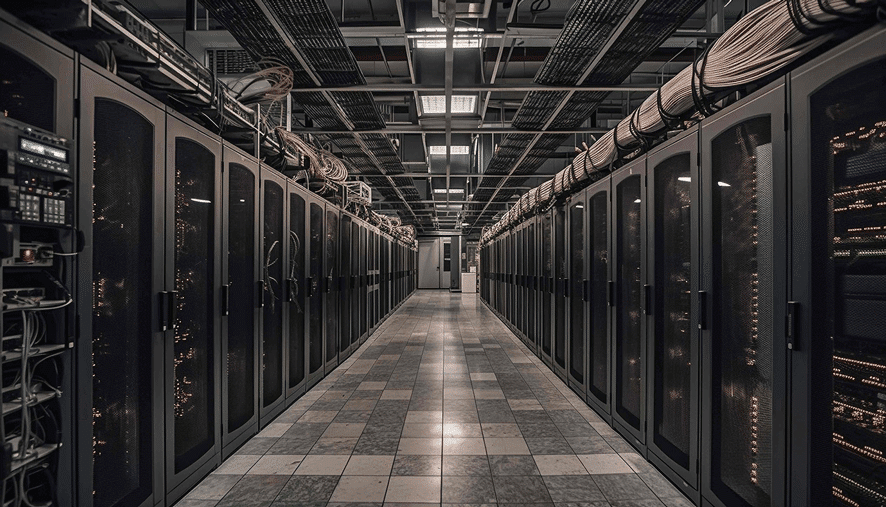Data Server Room Air Conditioning & Cooling
Maintaining the right temperature and humidity in data server rooms is vital for your equipment’s health and your business’s uptime. Overheated hardware can crash servers, cause data loss, and lead to costly downtime. As technology advances, more servers pack into smaller spaces, increasing cooling challenges. Picking the right air conditioning setup makes all the difference. It helps prevent overheating, reduces energy bills, and keeps your servers running smoothly.

Understanding the Role of Air Conditioning in Data Server Rooms
The Importance of Proper Cooling for Data Infrastructure
Servers generate heat constantly, especially in densely packed racks. High temperatures can cause hardware malfunctions or even damage. Too much humidity makes equipment corroded and can lead to short circuits. Studies show that cooling failures cause nearly 40% of data centre downtime. Without proper climate control, your servers could fail when you need them most.
Risks of Inadequate Air Conditioning
- Hardware overheating can lead to sudden shutdowns or permanent damage.
- Inefficient cooling increases energy costs.
- Over time, high temperatures shorten the lifespan of your IT gear.
- Inconsistent temperatures can cause data errors or loss.
Regulatory and Industry Standards
Guidelines from ASHRAE (American Society of Heating, Refrigerating and Air-Conditioning Engineers) set best practices for data centre environmental controls. Many countries have regulations requiring specific temperature and humidity levels. Compliance helps avoid fines and legal issues. Following these standards also improves system reliability and preservation.
Types of Data Server Room Air Conditioning Systems
Precision Air Conditioning Units
These are designed specifically for server rooms. They provide precise temperature and humidity control. Features include high airflow and filters to keep dust out. They are scalable and suitable for small to large data centres. This makes them a popular choice for critical environments.
Hot and Cold Aisle Containment Solutions
This method organises server racks into rows, separating hot air from cool air. Cold aisles bring in fresh, cooled air. Hot aisles allow warm exhaust to flow away efficiently. Containment improves cooling efficiency by reducing mixing of hot and cold air. It can cut energy use by significant margins.
In-Row and In-Room Cooling Units
In-row systems place cooling units directly between server racks. These reduce the distance hot air travels before cooling. In-room units serve larger areas with high server densities. They offer flexible deployment options and help optimise airflow, saving energy.
Supplemental and Backup Cooling Systems
Redundancy is essential for critical operations. Backup systems like CRAC (Computer Room Air Conditioning) units kick in when primary cooling fails. Other options include evaporative cooling and adiabatic systems that use water to cool air. These options keep your data centre operational during power or cooling failures.
Brands of Units for Server rooms
We supply the best brands for all your Server rooms, Such as Daikin Seasonal smart Inverter, Mitsubishi Mr slim series, Toshiba and much more.
Designing an Effective Server Room Cooling Strategy
Assessing Cooling Requirements
Start by evaluating your server density, hardware types, and room size. External climate influences cooling needs. Use tools to calculate heat load — the total amount of heat your equipment generates. Knowing this helps plan the right system size and capacity.
Implementing Efficient Cooling Architecture
Organise your rack layout for optimal airflow. Keep hot and cold air separated and avoid clutter blocking vents. Cable management improves airflow and reduces hotspots. Strategic planning ensures you get consistent cooling across all equipment.
Energy Efficiency and Cost Management
Use energy-efficient units and technologies like variable speed fans and intelligent controls. Real-time monitoring helps adjust cooling based on actual need, saving power. Regular maintenance keeps systems running at peak efficiency and prevents breakdowns.
Maintenance and Monitoring
Routine checks prevent many problems. Regularly clean filters and inspect mechanical parts. Use environmental sensors for temperature and humidity alerts. Predictive maintenance warns of issues before they cause downtime, protecting your investment.
Real-World Best Practices and Innovations
Case Studies of Successful Data Centre Cooling
Leading data centres now use advanced cooling methods, combining containment with smart controls. For example, some centres recover waste heat for other uses, reducing energy bills. These innovations show what’s possible with clever design.
Emerging Technologies in Data Center Cooling
Liquid cooling — where coolant circulates directly on hardware — dramatically reduces energy use. AI-powered systems analyse environmental data to optimise cooling in real-time. Some data centres now harness renewable energy, like solar or wind, to cut emissions.
Tips from Industry Experts
Cooling pros suggest always planning for future growth. As equipment gets denser, your cooling system must scale. Invest in flexible, eco-friendly solutions. “Waste heat reuse and AI control are the future,” says a leading data center engineer.
Key Considerations for Selecting Air Conditioning Systems
- Can your budget handle initial costs and ongoing energy bills?
- Will the new system integrate smoothly with existing infrastructure?
- Is there room to grow? Will the system scale with future needs?
- How environmentally sustainable are your options? Compliance with energy laws matters.
Please contact us today for all your Server room Air Conditioning.


